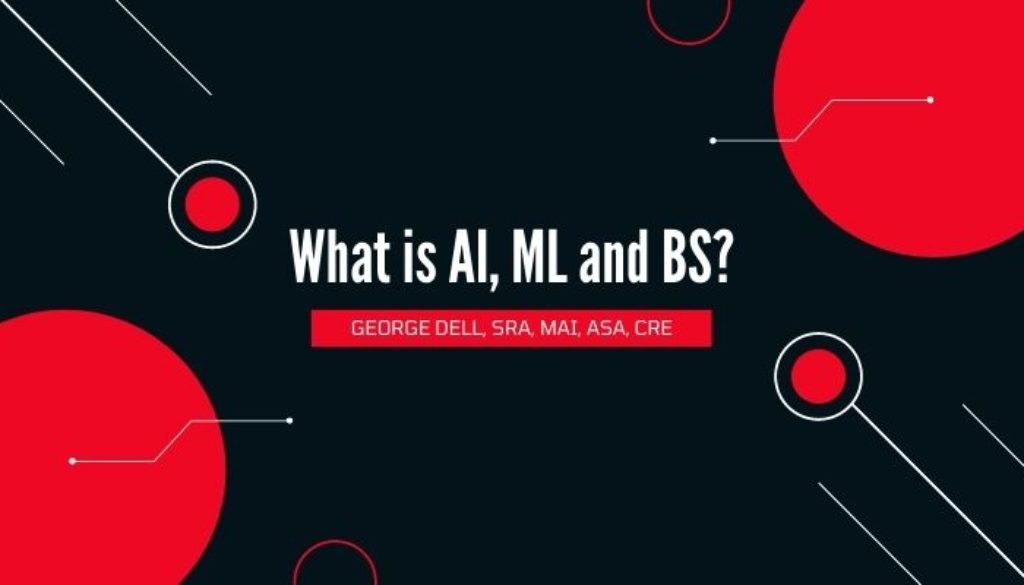Misused terms: AI (Artificial Intelligence), ML (Machine Learning), makes you look smart. It makes for clever marketing. And it may be BS. The most important “algorithm” for valuers is A+B=C.
Words are important. They help us understand each other and avoid wars. Marketers, in particular, tend to bandy about clever words, designed to impress you and get your signature. News people, and pop writers are usually a bit more careful, but may use pop meanings. The most careful are the real researchers and teachers who really want to communicate and impart real understanding.
The valuation profession moves from picking comps and giving opinions – to delivering risk-scored results. This requires the use of good words with clear-cut meanings.
This blog is dedicated to moving our ‘analytics’ words from marketing, to pop appraisal, to professional valuation usage. A few words about words. There is overlap between ML and AI, and here it is . . .
Artificial Intelligence (AI) comprises modeling and predictive analytics. (We will come back to these in a minute.) The appraiser makes modeling decisions. This can be the traditional appraisal decision about which of the “three approaches” to use. In EBV (Evidence Based Valuation)© this judgment is expanded and refined to more precise model decisions. The model decisions control the computer algorithms.
Algorithms can be simple or complex. An algorithm can be as simple as “If I push button A, do B”. Or it can be a complex sequence of logic and math equations.
A Model is the analyst’s decision of what applies to a problem to be solved. It requires understanding of what the algorithm does but does not require that the analyst be able to create the model. This is like driving a car. You don’t need to know how to build a motor. Just how to make it go.
Predictive analytics is what appraisers and asset analysts do. “Predictive models are predominant in most valuation settings” (The Appraisal of Real Estate). We estimate predictors (elements of comparison), while we predict market price, “value”.
Machine Learning (ML) is a set of algorithms using structured data. The learning can be supervised, such as using regression or classification algorithms – to learn to a known result. The learning can be unsupervised, where the algorithm deduces input to learn structures or relationships. In Valuemetrics.info classes (for example) we teach clustering algorithms to identify the CMS (Competitive Market Segment)©. (The CMS represents an objective approach to data selection, replacing the subjective “picking comps” methods of yesteryear.) Machine learning automates analytical model building. It relies on the idea that systems can learn from data, identify patterns, and make decisions with less human intervention.
Big Data is a broad term. It’s simply about fast computers using big data bases, available quickly.
Data Science is applying logic and math to the opportunities presented by big data. Data science integrates human expert judgment with modern computer power through visual/graphical models.
To summarize: algorithms are automated instructions and can be simple or complex, depending on how many layers deep the initial algorithm goes. Machine learning and artificial intelligence are both sets of algorithms but differ depending on whether the data they receive is structured or unstructured.
In a coming issue of TAAR (The Asset Analyst Report) we will consider each of these concepts and how they apply to Evidence Based Valuation, and how you can get from A to C, by implementing B (the change process) while avoiding the BS.
BS is the careless (and often improper) use of these words. The abuse is the product or service provides little real help in improving our results or our personal satisfaction. But it’s a good marketing ploy.
